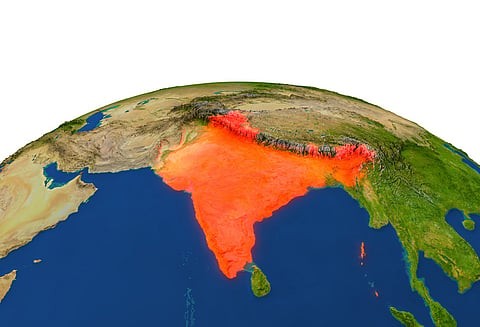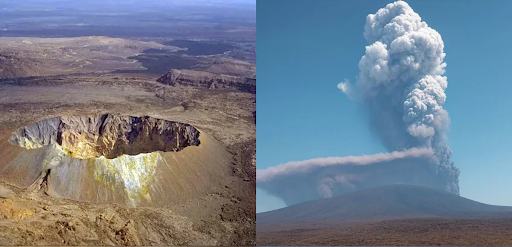Description
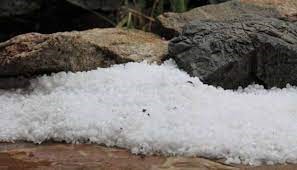
Disclaimer: Copyright infringement not intended.
Context
- A severe hailstorm recently wreaked havoc on crops and fruits in south Kashmir's Kulgam and Shopian districts.
- The India Meteorological Department (IMD) has forecast rain and snow in Jammu and Kashmir over the next two days.
- On Sunday, IMD said the weather remained mostly dry in most areas of J&K.
About Hail Storm
- Hail is a sort of solid rain that consists of ice balls or lumps.
- Hailstorms are storms that create hail that falls to the earth.
- They normally last no more than 15 minutes but can cause injuries and damage to buildings, vehicles, and other structures.
- They are most common in the midlatitudes.
- Hailstorms are sometimes accompanied by other types of extreme weather, such as cyclones and tornadoes.
- Hailstones range in size from microscopic pellets less than 1/4 inch in diameter to massive stones several inches in diameter.
.jpg)
Condition for Hail Storms to Occur
- The presence of well-developed Cumulonimbus clouds is required for hailstorms to occur.
- These are the gigantic anvil or mushroom-shaped clouds that can reach heights of 65,000 feet during thunderstorms.
- Strong air currents must be climbing through these clouds. These currents are frequently referred to as updrafts.
- High amounts of supercooled liquid water will be required in the clouds.
How does Hails from?
- It all starts with a water droplet being carried up by an updraft inside a thundercloud.
- Other supercooled water droplets already existing in the cloud will attach to the surface of the water droplet, producing layers of ice around it.
- As the water droplet ascends through the cloud, it comes into touch with an increasing number of supercooled particles.
- As it ascends higher in the updraft, the hail embryo grows larger and larger.
- Finally, it will grow to a size and weight that will cause gravity to operate on it and draw it down.
- Large hailstones are frequently distinguished by alternating layers of clear and opaque ice created by uneven freezing rates.
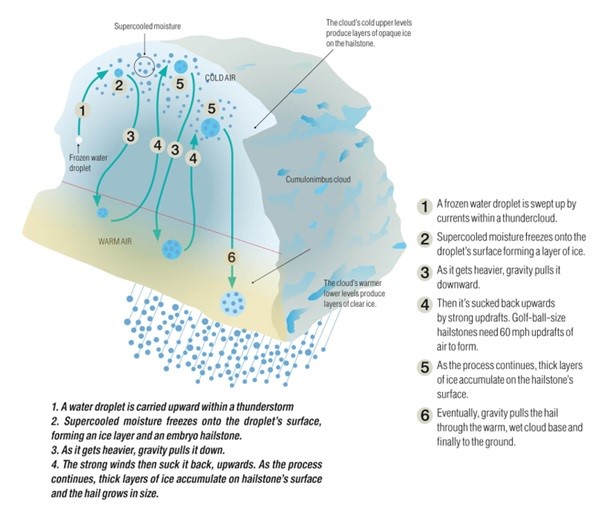
Favorable conditions for a hailstorm
Hail forms in the strong updraft region of a thunderstorm. Atmospheric conditions favorable for the formation hail bearing thunderstorms are:
- The high degree of instability,
- High moisture content,
- Low freezing level,
- High vertical wind shear.
|
PRACTICE QUESTION
Discuss the primary factors that determine temperature, precipitation, and wind distribution on the Earth's surface. How do these variables alter among climatic zones?
|








